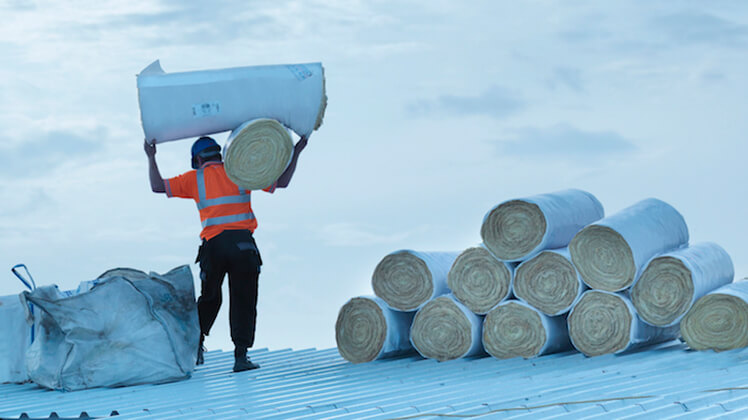Top options for insulating your home

Insulation can potentially save you big money on energy bills, keep your home comfortable and reduce your carbon footprint. It slows down the transfer of energy to and from your house, so it keeps winter warmth in and summer heat out.
There are plenty of options for what to insulate, and what materials you can use. The ceiling is usually the first place to start, but it’s also worth thinking about wall cavities, doors, windows and airy gaps. Here we explore some of the easiest and best approaches to insulating your home so you can stay comfortable in any weather, and save money too. Keep in mind, however, that an expert must be consulted prior to any work being conducted.
There are three main areas to think about when insulating your property: the ceiling and roof; wall cavities; and windows and doors.
All insulation sold in Australia must meet an Australian standard. Insulation products are rated by R-values – the higher the R-value, the more insulation they provide. The minimum R-value for ceiling insulation in non-Alpine parts of Australia is 4.1, while the minimum wall value is 2.8.
Start with the ceiling
Between 25% and 35% of heat loss or gain is through a house’s roof, so ceiling insulation is very effective in keeping you comfortable. The two main forms are bulk and reflective. Bulk insulation includes batts, blankets and loose-fill, while reflective insulation is mainly laminated foil sheets. Batts and blankets made from fibreglass, rock-wool or polyester slow down heat transfer by trapping air in millions of tiny pockets in the material. Batts are easy to install in most houses, and also come in DIY packs, although you should only attempt to install them yourself if you’re confident about working in roof spaces. Keep in mind that there may be exposed electrical wiring, and make sure you wear protective clothing – the material used in batts can irritate the skin and respiratory tract.
Loose-fill is shredded or granulated material such as cellulose from waste paper. It’s suitable for houses with flat or shallow-pitched roofs. Loose-fill can be pumped into your ceiling, and is cheaper than batts. It can lose some of its insulating property as it settles, and must be spread evenly to provide proper insulation. Reflective foil sheets can be installed under the roof, where they reflect heat away from the house. Double-sided foil also keeps heat in the ceiling space, preventing heat loss in winter.
Wall cavities: Fill or line?
Wall cavities can be insulated with reflective foil or batts when a house is being built. Insulation can also be retrofitted to cladding walls during renovations, for example, when weatherboard or interior plasterboard is being replaced. If you’re not planning a major renovation but still want insulation, loose-fill can be pumped into existing cavity walls if they can be sealed at the bottom.
Protect and seal windows and doors
Windows account for 10% to 20% of heat loss in winter, and 25% to 35% of heat gain in summer.
Double-glazed windows provide effective insulation if you’re building a new home or replacing windows in a renovation. Curtains slow winter heat loss, while blinds – especially external blinds that keep the sun from directly hitting the glass – are a great way to block heat in summer.
And remember: up to 25% of winter heat loss can be caused by draughts, so seal around windows and doors, too! Adhesive weather strips are a cheap and easy way to eliminate the worst draughts, while in older houses you might also consider using an old-fashioned padded draught stopper.
Insulating ceilings, walls, windows and doors can help to keep your house comfortable, and when you use less heating and cooling you’ll have a lower energy spend all year round.





